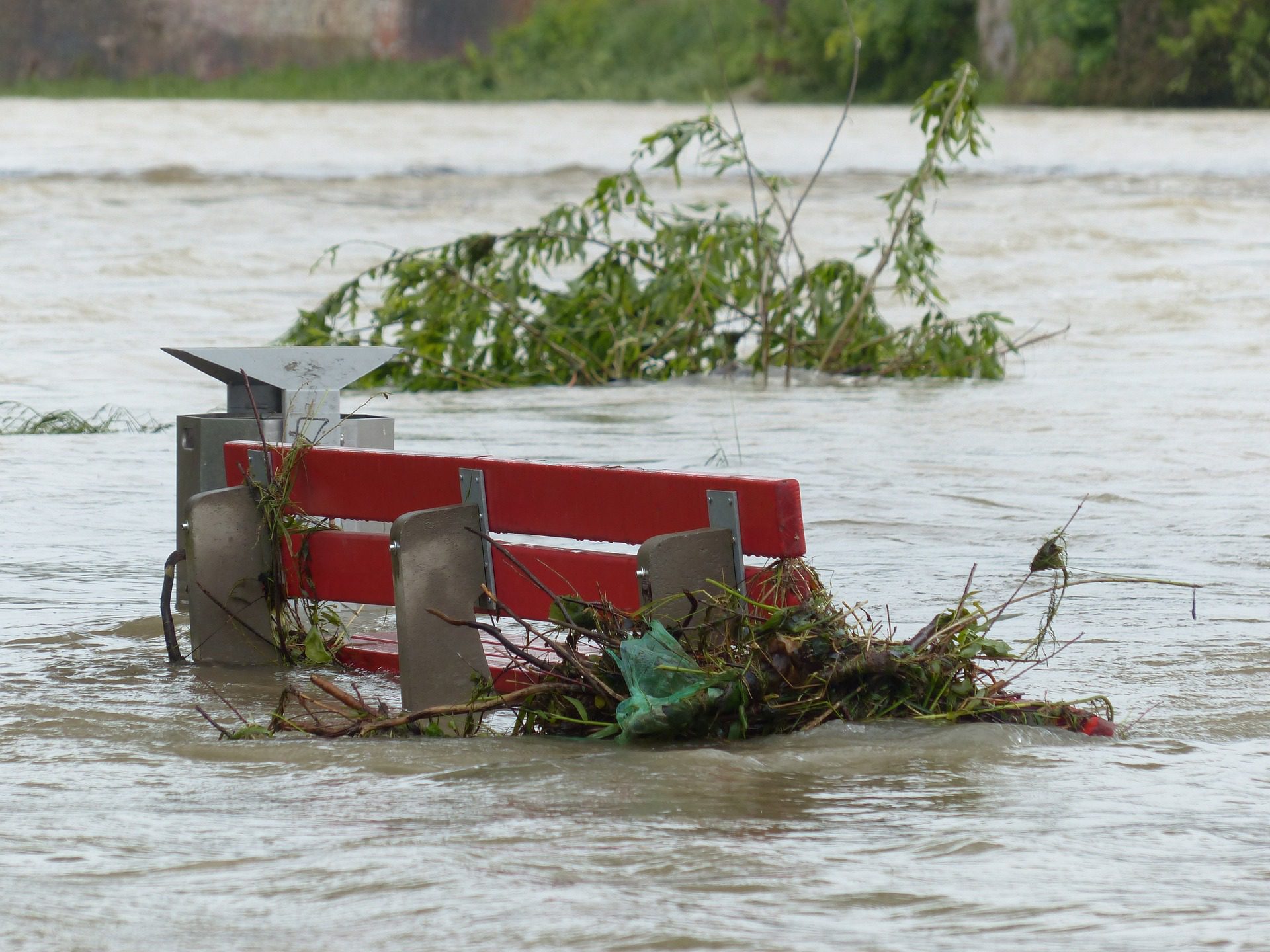
This blog post is Part 2 of a 3 part series on the intersection of human trafficking and disaster response by Benjamin Thomas Greer, JD, a subject matter expert in the field of human trafficking and child sexual exploitation; specifically instructing and developing human trafficking courses for law enforcement and emergency management personnel for the California Governor’s Office of Emergency Services.
The first installment, Avoiding Cascading Effects: why suspension of the Davis-Bacon Act may allow forced and exploited labor to occur during disaster recovery can be read here.
“Never in history has the management of threats to the environment, social and human rights of individuals and communities been as important at local, regional, and global scales, and never before have human security concerns been so closely interlinked across regions, groups and generations.” Climate Change and Displacement Reader
Natural disasters are on the rise due to human caused climate change, and they create an environment where human traffickers exploit the chaos and vulnerability these disasters leave in their wake towards their own ends. That is why it has never been so important for State and Federal emergency management agencies to learn from past disaster exploitation and integrate mitigation tactics into their disaster planning and preparedness procedures.
Disaster Relief and Exploitation
Traffickers have proven they will exploit the victims of disasters and/or profit from recovery efforts. In the wake of Hurricane Harvey, the US Department of Health and Human Services began identifying emergency management personnel as uniquely positioned to identify and report potential human trafficking and trafficking-related suspicious behavior. Disaster events remove much of the shadow traffickers rely upon to conduct their criminal activity. At the same time, disasters create or exacerbate vulnerabilities traffickers seek to exploit. While not all victims of natural disasters become trafficking victims, common risk factors for being trafficked are present in many of those affected during disaster events. This makes it imperative that emergency management agencies be aware of and well-trained for how to identify and respond when trafficking red flags are present.
While the research field focusing on the nexus between natural disasters and the trafficking of persons is in its early stages, experts are starting to more closely examine the value of well-trained responders in the mosaic of a “whole-of-government” counter-trafficking response plan, including the need for a gender lens. “A gender perspective should be integrated into all disaster risk management policies, planning and decision-making processes” states Mondira Dutta, author of Disaster and Human Trafficking “‘including those related to risk assessment, early warning, information management and education and training.” Too often compounding discriminations on top of existing structural inequities result in women and girls being far more vulnerable to being trafficked during disasters. As we expand our understanding of the interplay between trafficking and disasters, we must match the known or anticipated threats with a strategic and comprehensive counter, including the incorporation of a gender lens in training and response.
To really effectively address this issue, all emergency and disaster responders should have a basic awareness of human trafficking and trafficking related suspicious activity. Currently, emergency and disaster responders are woefully undertrained and under-skilled to properly identify trafficking related suspicious behavior. In a study conducted for the University of Chicago’s Master of Science in Threat and Response management program entitled Human Trafficking Awareness for Disaster Responders, 92% of survey respondents answered human trafficking education was very/extremely important to the administration of disaster support. However, only 40% of the same respondents said their employer provided any level of trafficking related training. While the US Department of Health and Human Services has begun recognizing this developing nexus, awareness training curriculum has not penetrated the emergency management field.
Current Training Options: One Size Fits No One
In October 2021, Federal Emergency Management Agency (FEMA) announced two key initiatives to advance climate change adaptation and promote disaster risk reduction and community resilience nationwide. These initiatives established a Climate Adaptation Enterprise Steering Group and a stakeholder engagement process to help develop the agency’s 2022-2026 Strategic Plan.
“Communities across the country continue to witness the devastating and increasing impacts of hurricanes, floods, wildfires, droughts and other weather events. The increase and severity of disasters burden on our emergency management partners and disproportionately impact historically underserved communities.”
The Department of Homeland Security (DHS), Health and Human Services (HHS), and FEMA currently offer voluntary basic anti-trafficking training; one general and one more tailored for disaster responders.
FEMA, through their Independent Study Course modules offers:
IS-1150: DHS Human Trafficking Awareness for FEMA Employees
IS-1151 Blue Campaign Disaster Responder Trainings
IS-1152 Blue Campaign First Responder Training
These brief self-guided courses are introductory in nature and provide guidance on how to:
Identify indications of human trafficking victims.
Compare similarities and differences between “human trafficking” and “smuggling.”
Describe 4 different types of immigration relief.
Identify possible indicators of human trafficking that maybe encountered on the job.
Describe the actions that should be taken when observing suspicious activities.
As of 2021, The National Human Trafficking Training and Technical Assistance Center (NHTTAC) delivered a virtual pilot training designed for emergency managers on how to prevent and respond to trafficking within a disaster management framework. Developed in collaboration with the Office on Trafficking in Persons, the Office of Human Services Emergency Preparedness and Response, and the Office of the Assistant Secretary for Preparedness and Response, the 1-hour course leverages the disaster management framework to support emergency managers in preventing, identifying, and responding to trafficking in their professional setting.
Learning Objectives of the course are:
Understand the increased nexus between sex and labor trafficking and a disaster.
Develop concrete strategies and educational and outreach materials.
Engage stakeholders in executing the response plan.
Conduct assessments for communication touchpoints to respond.
Communicate human trafficking indicators to different audiences.
Understand that foreign labor may be trafficked to meet the demand generated by recovery or rebuilding efforts.
At a global level, the International Organization for Migration (IOM) offers an 11-module training demonstrating how human trafficking affects people impacted by conflict, governmental/social instability, natural disaster, and displacement.
While this course was developed in partnership with the US Department of State’s Office to Monitor and Combat Trafficking In Persons and was designed for external audiences with much of its content having limited application within the United States. As emergency management agencies everywhere better appreciate the interplay of disasters and exploitation, they must include comprehensive anti-trafficking resiliency and mitigation planning into the disaster planning process. As all-risk emergency response agencies consistently evolve to address threats, anti-trafficking preparedness provides an opportunity to demonstrate dedication to public safety and community support.
In keeping within the directive of FEMA’s 2021 initiatives, FEMA should include a comprehensive anti-trafficking training plan, re-examine the data around the validity of the suspension of labor protections like the Davis Bacon Act (see previous blog post ), and augment All-Hazard Incident Management Teams (AHIMT) to include an anti-exploitation specialty unit.
As of today, none of the training available is compulsory, comprehensive or targeted enough to actually provide the skill-set a disaster responder would need to identify and respond to human trafficking red flags. In both the U.S. and internationally, the current training on human trafficking for disaster and first responders is average at best, no matter which disaster response agency or organization. There is only the most basic knowledge provided about human trafficking and usually only a brief connection made between human trafficking and disasters. Most do not address fundamental aspects of what comprehensive training would need to include like:
Each response system and how the responders may encounter different perspectives of trafficking related suspicious behavior
How urban search and rescue’s trafficking encounter may be different from an evacuation shelter worker’s encounter and training on how to identify and respond to each
Available training now is too general to be of use and is not tailored for the jurisdiction or agency’s response duties. This “one-size fits all” approach falls short of providing the student a quality skillset they could apply in the field. A skillset that could stop a victim of disaster from becoming a victim human trafficking.
Comprehensive Training Reflects Community Commitment
A jurisdiction’s criminal and civil laws reflect the values and morals of that community. The ability to refine and perfect a response defines its commitment to the cause. As emergency management matures into a full-body/all-hazards approach, policy makers must seek out or create new methodologies to identify and inhibit exploitation. All available research indicates that an effective response requires a comprehensive whole-of-government unified approach. Bringing emergency managers into the operational fold with law enforcement and human trafficking victim service organizations expands our national anti-trafficking response footprint. Providing comprehensive, specialized training will magnify our efforts to eradicate trafficking domestically and internationally as well as prevent people already victims of a natural disaster, also becoming a victim of human trafficking.
Benjamin Thomas Greer, JD – Mr. Greer is a subject matter expert in the field of human trafficking and child sexual exploitation; specifically instructing and developing human trafficking courses for law enforcement and emergency management personnel for the California Governor’s Office of Emergency Services. Before joining OES, he served as a Special Deputy Attorney General for the California Department of Justice. Aside from his work with CalOES he is a Research Associate for the University of Cambridge’s Centre for Applied Research in Human Trafficking.












